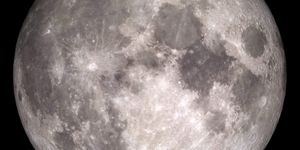Are Planets Responsible for the Mysterious Fast Radio Bursts?
Fast Radio Bursts (FRBs) are a relatively new phenomenon in the field of Astrophysics. These bursts are super powerful, which means that the amount of energy released by the Sun in about 3 days is equivalent to the amount they release in a few milliseconds. The very first FRB was discovered by Duncan Lorimer, a professor at West Virginia University, and his student David Narkevic in 2007. Since then 100s of these have been discovered and, interestingly, not all of them exhibit the same behavior, i.e., some repeat after a certain time (~few days or months), and others just appear once. There are numerous theories out there that involve neutron stars with strong magnetic fields, black holes, and even extraterrestrial intelligence.
A study conducted by Dr. Huang and his team from Nanying University in China conducted a theoretical investigation and revealed a new, yet promising, theory that includes a planet and a neutron star (a remnant of a dead star). Usually, planets are found around normal stars, but, yes, planets have also been found to be orbiting around these remnants. Neutron stars have a very strong gravitational pull as well as strong radiation fields on their surface when compared to normal stars and, as you will read below, this plays a role in the discovery made by this team.
The authors state that these fast radio bursts can come from pieces of a planet that are in a highly elliptical orbit with a neutron star. When this planet gets too close to it, the strong gravitational pull elongates the planet, thereby distorting its shape. This phenomenon is also called “tidal pull”. In this process, sometimes a few pieces of the planets can be ripped apart; usually the size of a few miles. Now, when these pieces come in close contact with the radiation fields of the neutron star, they burn up and this phenomenon is seen in radio regimes. In other words, they emit radio waves which show up as quick radio bursts when seen from our telescopes from the ground. This phenomenon is also capable of explaining the repeated outbursts, which would mean that these fragments from the planet interact with the neutron star whenever it comes close to it in its highly elliptical orbit. They published their findings in the peer-reviewed Astrophysical Journal in March 2022.
Source: Science News, The Astrophysical Journal








